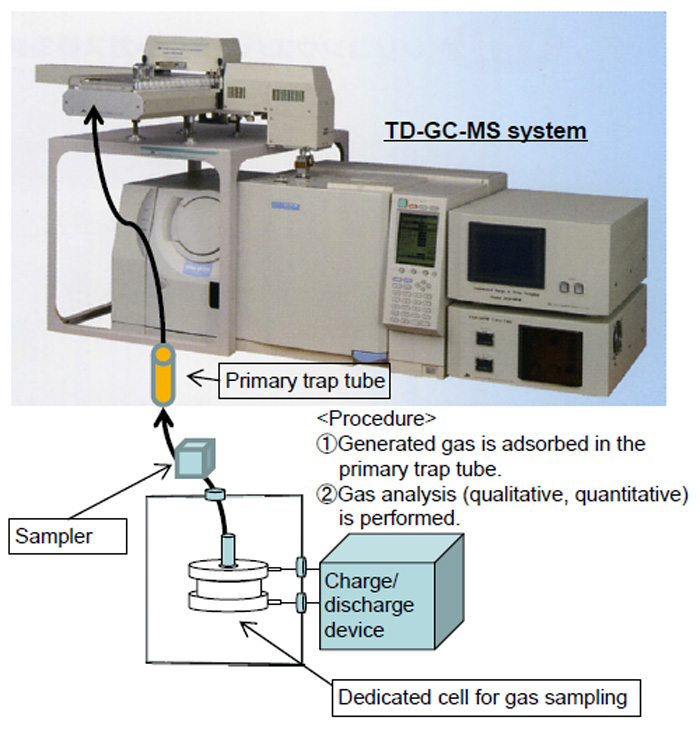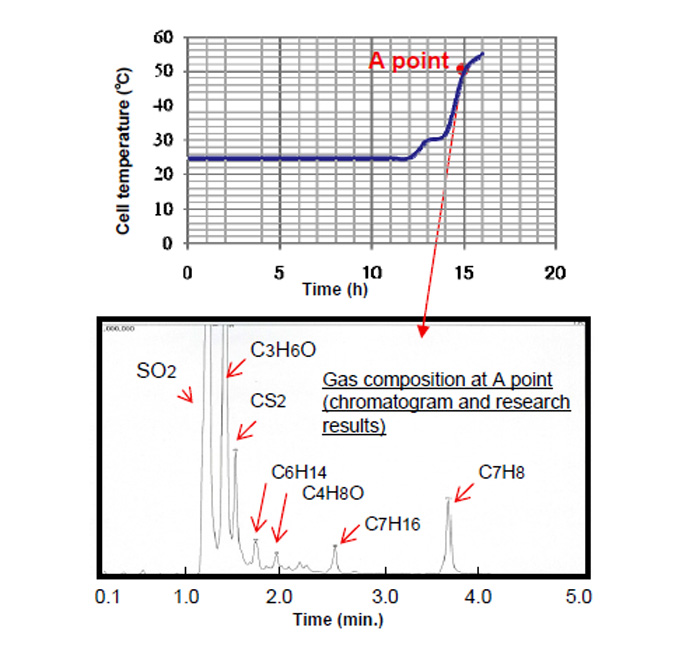Disassembly Investigation of Batteries and Capacitors,
Investigation for Deterioration and Defect,
and Structural Analysis
Generated-gas Analysis
In-situ analysis (quantitative, qualitative) of gas generated in lithium ion cells, etc. during charge/charge and overcharge/discharge
In-page menu
Internal Gas Generation in Lithium Ion Cells
In some cases, swelling (internal gas generation) while a cell is in use is a safety problem.
This phenomenon is caused by decomposition of the cell materials, i.e., the electrolyte and electrode itself, by oxidation or reduction, and is one factor which requires special attention from the viewpoint of cell deterioration.
In-situ analysis of gas generated in a cell during operation (during discharge/charge or overcharging) by this method is an effective analysis method of understanding the distinctive internal gas generation behavior of cells, and is useful in improving the properties and safety of cells.
Analysis Method
Gas is collected at various points in charge/discharge and overcharge/discharge of a lithium ion cell.
- Qualitative analysis is possible to the level of trace species of generated gas using thermal desorption gas chromatography/mass spectrometry (TD-GC-MS).
- Quantitative analysis of gas species is possible to the ppm order by gas chromatography/mass spectrometry (GC-MS) and gas chromatography (GC).
Example of Analysis: Overcharging Test and Gas Analysis of Lithium Ion Cell
In-situ gas analysis system for charge/discharge, overcharge/discharge (under atmospheric non-exposure)

Results of cell temperature measurement during overcharging test and results of analysis of generated gas at end-point temperature (A point)

and the generated gas was analyzed at the end-point temperature.


